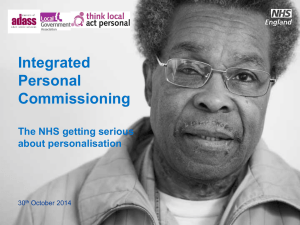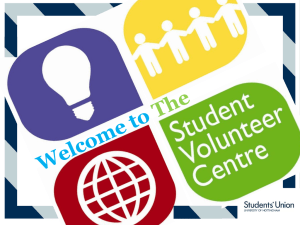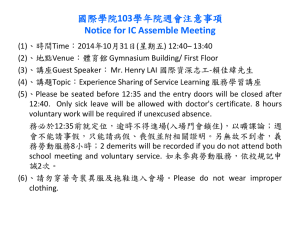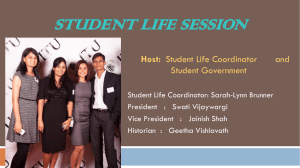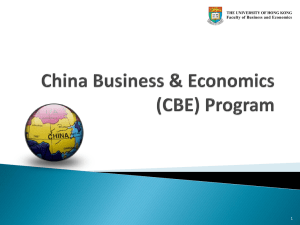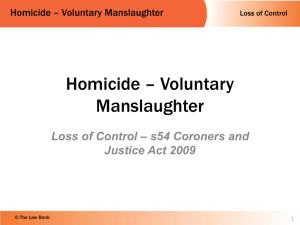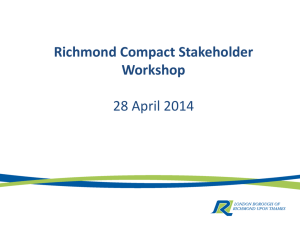here
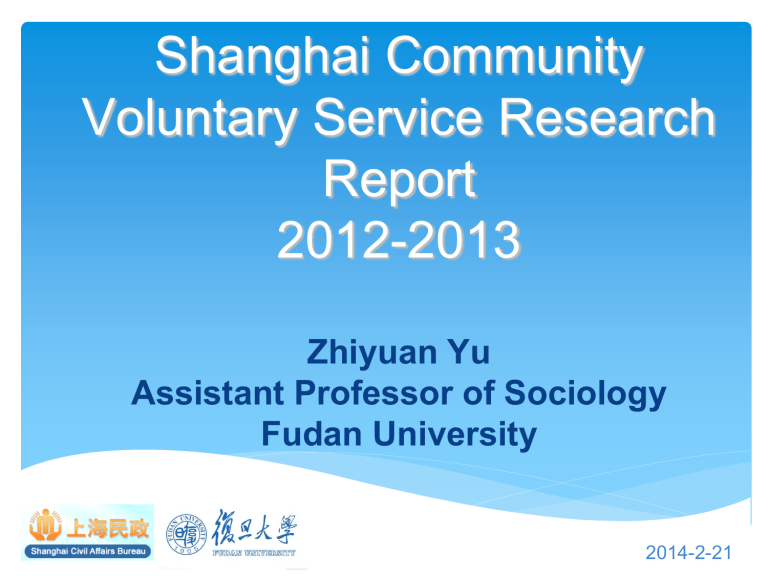
Shanghai Community
Voluntary Service Research
Report
2012-2013
Zhiyuan Yu
Assistant Professor of Sociology
Fudan University
2014-2-21
Agenda
1.
Research Background, Objectives, and Methodology
2.
Research Framework
3.
Research Findings
4.
Conclusions and Recommendations
5.
Questions and Answers
1. Research Background, Objectives, and
Methodology
The main objectives of the research is to better understand the current status, problems and challenges of community voluntary services in Shanghai, and propose some policy recommendations.
This is a collaboration project between the Department of
Philanthropy and Voluntary Service of the Shanghai Bureau of
Civil Affairs and Fudan University.
The fieldwork was conducted between January to August
2013.
1. Research Background, Objectives, and
Methodology
The major research questions are:
What are the major characteristics of community voluntary services in Shanghai?
What are the driving forces for the development of community voluntary services in Shanghai?
What are the problems and bottlenecks in the community voluntary services in Shanghai?
What will be the future of community voluntary services in
Shanghai? What will be the proper role of government in facilitating the development of community voluntary services in Shanghai?
1. Research Background, Objectives, and
Methodology
A mailed survey of 222 neighborhood organizations in 17 districts in Shanghai. The response rate is 81.98%. We also selected 28 neighborhood organizations for in-depth telephone interviews.
In-depth interview with 23 voluntary service organizations.
In-depth interview of 17 community service volunteers
In-depth interview with 48 citizens in Shanghai, regarding their experiences or lack of experience of community voluntary services, motivations and other opinions.
Content analysis of various awards materials of voluntary services, philanthropy, and social innovation projects.
2. Research Framework
We argue that the community voluntary service sector is composed of four elements, including volunteers, voluntary actions, voluntary organizations, and voluntary culture. The core component is volunteerism.
志 愿 者
志 愿 文 化 /
慈 善 公 益 文 化 志 愿 精 神
志 愿 行 动
志 愿 者 组 织
3. Research Findings
We identify two major characteristics of community voluntary services in Shanghai. The first characteristic is its diversification.
There are four major players in community voluntary services in Shanghai:
Neighborhood organizations and residents committee
NGOs
Corporate volunteer groups
Student volunteer groups
2020/4/10
Four major actors in community voluntary services
•Most of the volunteers are old and retired .
•Traditional forms voluntary activities
Neighborhood
Organizations,
Residents'
Committees
Civic
Associations,
NGOs
•Volunteers are young adults, white collars, professionals.
•Innovative forms of voluntary services
•Online mobilization
•As part of CSR activities
•Can mobilize corporate resources
Corporate
Voluntary
Organizations
Student
Voluntary
Organizations
• College students and middles school students
•Based on school activities.
2013-12-4
(1) community voluntary services organized by neighborhood organizations
Most of their volunteers are people over 60 and retired.
The volunteers are recruited through residents’ committees, and local association of elderly people.
Offer traditional volunteer programs. For instance, community policing, community environment programs, community health, community education, services for the disabled, legal assistance, and senior citizen activities.
Most popular programs are senior citizen activities, community policing, community environment, convenience services, and transportation safety program.
Table 3.1: various community voluntary service programs
敬老
助残
社区 环境
便民
社区法律援助 /
调解
帮困
文明礼 仪
青少年
社区治安
文体
社区 卫生
交通文明
公共 场所文明引导
农民工
Table 3.2: most popular community voluntary service programs
敬老
助残
社区 环境
便民
社区法律援助 /
调解
帮困
文明礼 仪
其他
青少年
社区治安
文体
社区 卫生
交通文明
公共 场所文明引导
农民工
Case study: Pudong Weifang Community senior care program
(2)Community voluntary services organized by NGOs
NGOs have been growing rapid in the past decades.
The growth of NGOs has provided more opportunities for citizens to participate in community services.
NGOs are good at developing innovative volunteer programs, and better volunteer management systems.
Case Study: Jiu Qian Volunteer Center
Case Study: A Yan and His Friends
Case study: 1kg project
Case Study: Xie Li Hui
Family Volunteering Model
Case Study: Ting Dao Forum
Case Study: Hands On Shanghai
(3) Corporate Volunteering
Corporate volunteer programs are usually part of corporate social responsibility programs.
Corporate volunteer programs help employees develop better team work capabilities and nurture employee loyalty, and also promote the corporate image.
Company employees who have participated in corporate volunteer programs said that those programs have provided them an opportunity to make a positive contribution to society, and increase their senses of social responsibility.
Case Study: Bayer
(4) Student Volunteering
Almost every university in Shanghai has a or several student volunteer associations.
84% of neighborhood organizations that we surveyed have some collaboration methods with local schools.
But most with universities, less with middle schools or primary schools.
Students like volunteering because it broadens their perspectives and improve their social skills.
3. Research Findings
The second characteristic is that people’s understanding of what does volunteering means is deepening.
3. Research Findings
The problem of volunteering organized by the neighborhood organizations and residents committee is its top down mode of mobilization which could lead to the problem of lack of motivation or forced volunteering.
How to make the community volunteer service less government oriented and more socially oriented?
How to attract different age groups to community volunteer services? How to better connect community needs with the interest of voluntary groups and volunteers?
3. Research Findings
Involve more NGOs in community service.
Understand different needs and motivations of volunteering for people of different age, education background and occupations.
More and more people choose volunteer programs based on their interest. Thus it is important to design better volunteer programs that is meaningful and innovative. This result is particularly prominent among people who are 18-54 years old.
Table5.1: factors to consider regarding whether to participate in a volunteer program
Table5.2: Comparison of younger population vs. elder population
Table5.3: Reasons for not participated in any voluntary services yet
How to better connect community needs with the interest of volunteer organizations?
Case Study: Horizon Corporate Volunteer
Consultancy- 1001 Wishes Project
4. Conclusions and Recommendations
Strengthen the management of voluntary services
Improve volunteer recruitment and mobilization
Improve volunteering incentive system
Involve more NGOs and corporate volunteer groups into community services
Build better capacity for existing voluntary organizations
Develop better voluntary service programs
Better promote the culture of volunteering
Better connect voluntary groups with community needs
Improve the government-run volunteer database and websites
4. Conclusions and Recommendations
Driving forces for the future development:
Increasing need for community services
People are more interested in volunteer work
More diversified voluntary organizations
Government support
Development of culture of philanthropy and social responsibility
5. Questions and Answers
Discussion questions
How do you think of corporate volunteer programs as part of CSR strategy?
How can corporate CSR/corporate volunteer programs and NGOs get more involved in community services?
How to motivate your employees to participate in community service programs?
How can corporations and NGOs better work with government in community service?
2020/4/10
Thank you!
Yu Zhiyuan
Department of Sociology, Fudan
University yuzhiyuan@fudan.edu.cn
